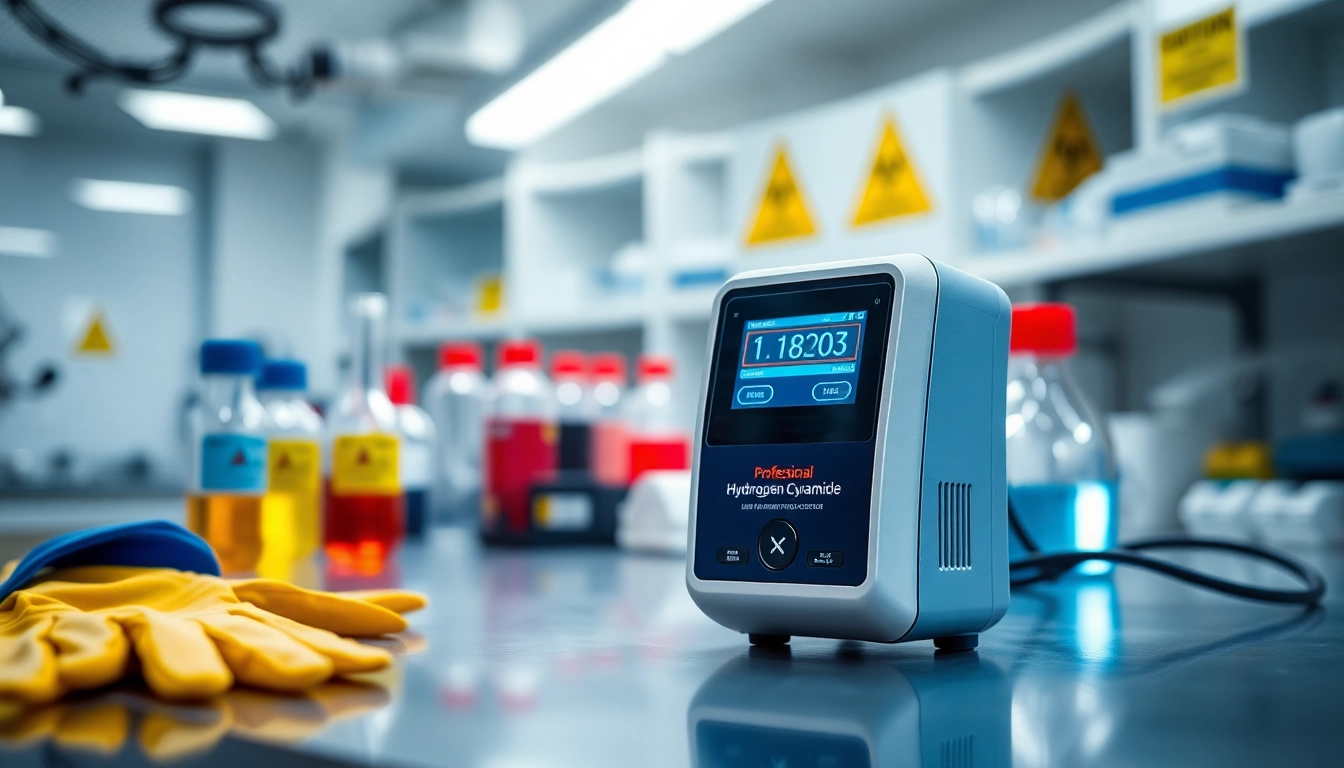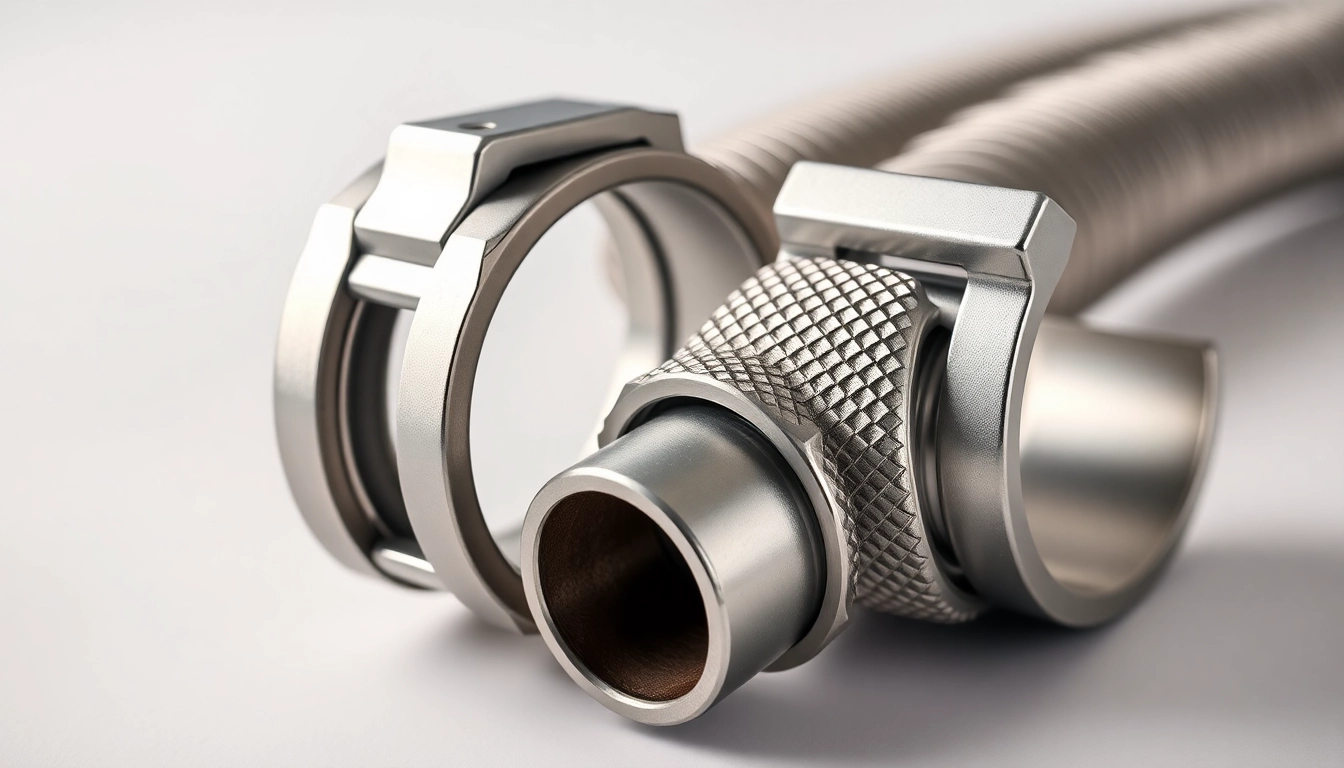Understanding Hydrogen Cyanide Detectors
What is a Hydrogen Cyanide Detector?
A Hydrogen Cyanide detector is a specialized device designed to detect and monitor the presence of hydrogen cyanide (HCN) gas in various environments. Hydrogen cyanide is a highly toxic and volatile substance that can pose significant health risks, even at low concentrations. These detectors utilize advanced sensor technologies to provide accurate, real-time readings of HCN levels, ensuring safety in industrial, laboratory, and environmental settings. With the potential for serious implications on human health and safety, effective detection systems are vital for those working with or around this hazardous chemical.
Importance of Hydrogen Cyanide Detection
Detecting hydrogen cyanide is critical due to its extreme toxicity and the rapid onset of symptoms from exposure. Whether it’s in industrial processes, research laboratories, or other environments, having a reliable Hydrogen Cyanide detector can be the difference between life and death. Early detection can prevent accidental poisoning, enabling personnel to evacuate or isolate the area before HCN levels reach dangerous thresholds. Regulatory bodies and safety standards mandate the use of such detectors in specific industries, underlining their significance in maintaining workplace safety and compliance with environmental regulations.
Types of Hydrogen Cyanide Detectors
Hydrogen cyanide detectors can be categorized into several types based on their technology and application. These include:
- Electrochemical Sensors: These sensors work by detecting changes in electrical current as HCN gas interacts with the electrodes. They are known for their sensitivity and reliability, often used in portable devices for personal safety.
- Infrared Sensors: Utilizing infrared light absorption principles, these detectors measure the concentration of hydrogen cyanide in the air. They are preferred in fixed installations and are effective in continuous monitoring of environments.
- Metal Oxide Semiconductor (MOS) Sensors: These sensors detect hydrogen cyanide by measuring changes in electrical resistance in the presence of gas. They are commonly used due to their low cost and compact design, though they may be less sensitive than electrochemical sensors.
- Photoionization Detectors (PID): Operating with ultraviolet light, PIDs can detect a wide range of organic compounds, including hydrogen cyanide. They provide rapid readings and are commonly used in emergency response scenarios.
Applications of Hydrogen Cyanide Detectors
Industrial Uses of Hydrogen Cyanide Detectors
In industrial settings, particularly in the production of synthetic fibers, resins, and plastics, hydrogen cyanide is a key intermediate. Industries involved in pesticide manufacturing also utilize HCN in processing. Monitoring hydrogen cyanide levels is not only essential for compliance with industry regulations but also crucial in protecting workers from exposure risks. Implementing hydrogen cyanide detectors in these environments supports the enforcement of safety protocols, minimizing the potential for hazardous incidents.
Environmental Monitoring and Compliance
Hydrogen cyanide can be released into the environment through various means, including industrial emissions and combustion processes. As regulatory frameworks evolve to address environmental pollution, the need for effective environmental monitoring is paramount. Hydrogen cyanide detectors play a crucial role in assessing air quality and ensuring that toxic emissions remain within permissible limits. They assist in meeting compliance requirements set forth by environmental protection agencies, thus contributing to public safety and ecological integrity.
Laboratory Safety Protocols
Laboratories handling hydrogen cyanide must establish strict safety protocols. This includes the installation of hydrogen cyanide detectors to provide alert systems for personnel monitoring, ensuring that any leaks are detected immediately. Regular training of laboratory staff on recognizing the signs of hydrogen cyanide exposure, along with the proper response strategies, further enhances safety. Incorporating detectors into routine hazard assessments establishes a culture of safety and vigilance in laboratory environments.
Choosing the Right Hydrogen Cyanide Detector
Features to Look for in a Detector
When selecting a hydrogen cyanide detector, several features should be considered to ensure optimal performance:
- Sensitivity and Range: The detector should be sensitive enough to display accurate readings at low concentrations, with an adequate detection range suitable for the intended application.
- Calibration and Maintenance: Look for units that require minimal maintenance and offer easy calibration options. User-friendly calibration processes can greatly enhance usability in the field.
- Alarm Systems: Detectors equipped with visual and audible alarm systems alert users to dangerous gas levels, allowing for prompt action to be taken.
- Portability: If the detector is intended for field use, portability features such as lightweight and compact design are essential.
- Data Logging: Some advanced models offer data logging capabilities for tracking exposure over time, which can be invaluable for safety audits and compliance reporting.
Comparing Detector Brands and Models
The market for hydrogen cyanide detectors is diverse, with numerous brands offering a variety of models. When comparing detectors, consider the following:
- Reputation and Reviews: Investigate user feedback and reviews to gauge reliability and customer satisfaction. Brands with extensive experience and positive testimonials are often safer choices.
- Service and Support: Evaluate the level of customer service provided by the manufacturer. Solid customer support can make a significant difference if issues arise with the equipment.
- Warranty and Service Plans: Consider detectors with comprehensive warranty options to protect your investment and ensure long-term functionality.
Cost Considerations and Budgeting
When budgeting for hydrogen cyanide detectors, several cost factors should be taken into account:
- Initial Purchase Price: Detectors range in price based on technology, features, and brand. While it might be tempting to prioritize lower cost, consider long-term savings associated with quality equipment.
- Maintenance Costs: Factor in periodic maintenance and calibration requirements, which can vary significantly between models.
- Training Expenses: Implementing a comprehensive training program for users can incur additional costs but enhances safety and effectiveness.
Best Practices for Using Hydrogen Cyanide Detectors
Installation Guidelines
Proper installation of hydrogen cyanide detectors is crucial for accurate readings. Follow these guidelines:
- Location: Install detectors in locations where hydrogen cyanide is most likely to accumulate, such as near production equipment or ventilation systems.
- Height and Orientation: Position detectors at appropriate heights to capture gas dispersion, considering that HCN can exist in varying forms (gaseous and liquid) under different conditions.
- Environmental Considerations: Ensure that the installation area is shielded from interference from other chemicals or environmental factors that may affect detector performance.
Regular Maintenance and Calibration
To ensure the ongoing reliability and functionality of hydrogen cyanide detectors, establish a maintenance schedule that includes:
- Periodic Calibrations: Follow manufacturer recommendations for calibration frequency. Regular calibration ensures continued accuracy and responsiveness.
- Visual Inspections: Conduct regular visual inspections of detectors, checking for physical damage and ensuring alarm functionality.
- Battery and Power Checks: For portable detectors, routinely check the battery status and replace batteries as needed to prevent failure during critical times.
Training and Safety Drills
No detector is effective without properly trained personnel. Implement regular training sessions covering:
- Operation of the Detector: Ensure that all users can operate the equipment properly, including how to interpret readings and respond to alarms.
- Emergency Procedures: Develop clear protocols for responding to elevated hydrogen cyanide levels, emphasizing evacuation routes and safety equipment usage.
- Drills and Simulations: Conduct safety drills to practice emergency responses in real-world scenarios, enhancing readiness for potential incidents.
Evaluating Detector Performance and Efficacy
Key Performance Indicators
To assess the effectiveness of hydrogen cyanide detectors, organizations should establish key performance indicators (KPIs) such as:
- Detection Sensitivity: Measure the lowest concentration of hydrogen cyanide that the detector can accurately identify.
- Response Time: Evaluate how quickly the detector responds to changes in gas concentrations, crucial during emergency situations.
- Calibration Accuracy: Track the frequency and accuracy of calibrations, ensuring that instruments maintain their integrity over time.
Conducting Regular Audits
Regular audits of detection systems are essential in identifying potential issues and ensuring compliance with safety standards. During audits, consider the following:
- Performance Review: Review historical detector performance data to identify trends or anomalies in hydrogen cyanide levels.
- Equipment Functionality: Verify that all detectors are functioning properly and are within calibration requirements during audits.
- Compliance Verification: Ensure compliance with local laws and regulations regarding hydrogen cyanide monitoring.
Compliance with Safety Regulations
Compliance with safety regulations is non-negotiable when operating in environments where hydrogen cyanide is present. To adhere to requirements:
- Stay Informed: Regularly review any changes to national or international regulations concerning hazardous materials.
- Documentation: Maintain accurate records of detector performance, training logs, and calibration schedules to demonstrate compliance during inspections.


